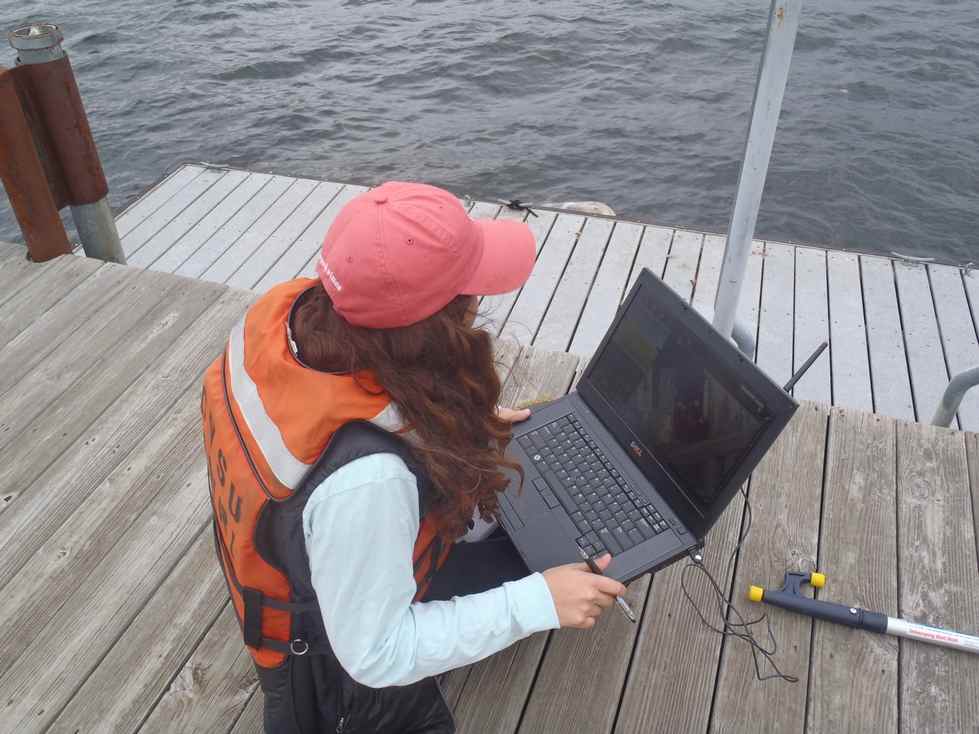AWRI BoatBot
Painted and trimmed out in GVSU blue and white, the AWRI BoatBot joins the much “larger” GVSU fleet of research vessels ready to serve the west Michigan community.

Student Research Assistant Gabrielle Thelen with nearly completed AWRI BoatBot and wirelessly tethered UAS.

Off the shelf components like the electric propulsion system used in BoatBot ensure easily found parts and cost effective maintenance.

Open Source Shore Control Station offers user friendly autonomous programming and fail safe systems including steering redundancy.
Multi Purposed
AWRI’s BoatBot was originally conceived to assist researchers in the collection of water chemistry data needed in mapping Harmful Algal Blooms. But it didn’t take long to recognize its considerable potential not only for university researchers put as a low cost solution for citizen scientist. Designed to carry an YSI 6600 Multiparameter Water Quality Sonde, it can handle an instrument payload weighing approximately 10 pounds. It has an overall length of 1 meter with a top speed of 10 mph, and typically cruises at a speed of 1-3 mph for the duration of 1 hour without modification to its initial configuration. We can always add more batteries as long we continue to meet overall weight limits. BoatBot is an Autonomous Surface Vehicle (ASV) and as such is self-guided following a pre-programed mission plan. It can also be “steered” using a compatible Shore Control Station or a manually operated radio control transmitter/receiver.
Resilient
The twin hull configuration adopted by BoatBot takes advantage of the inherent stability of a catamaran and facilitates the flexible distribution of various payloads.
Dependable
The BoatBot is constructed with “off the shelf” components, including the low cost readily available propulsion system which consists of twin operated electric motors intended for common model boats. This choice makes motor replacement quick, easy, and inexpensive. These motors use impellers and operate much like personal watercraft taking in lake water and pumping it out again in an accelerated stream. This jet action results in dependable shallow draft weed free operation.
Capable
The on-board guidance systems developed for BoatBot make possible communications with the Shore Control Station which constantly monitors battery life, sensor health, BoatBot location, and telemetry functions. This on-board computer also allows communication between other BoatBots and Unmanned Aerial Systems (UAS) making it possible to coordinate reconnaissance efforts with multiple vehicles saving time and conserving resources.
For more information about BoatBot and AWRI's use of unmanned research vehicles contact Associate Research Scientist John Koches.

